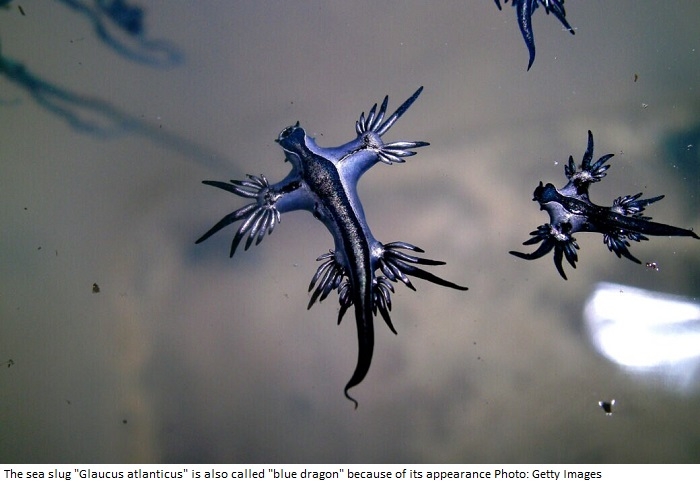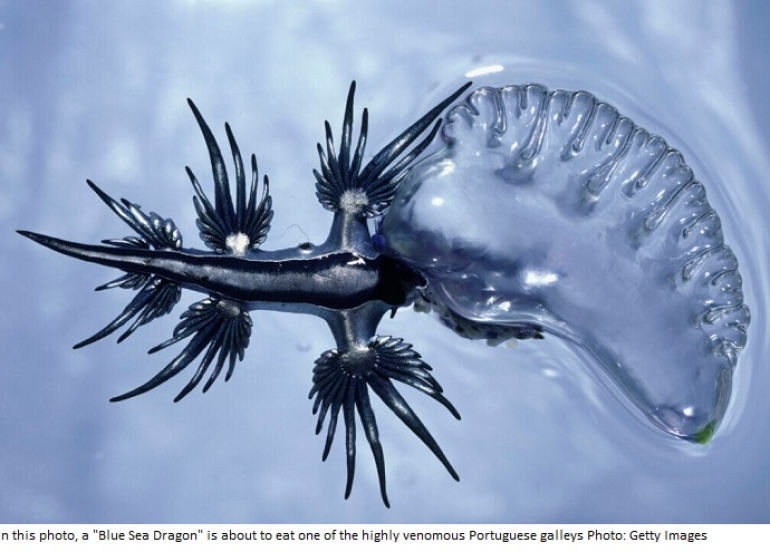Poisonous 'Blue Dragon' Sea Slug Spotted in the Mediterranean After 300 Years, Warns Travelbook

In a recent article by Larissa Koenigs on the Travelbook site, it has been reported that the "Blue Dragon" sea slug, also known as the sea wasp, has been sighted in the Mediterranean after 300 years.
The sightings of the bright blue sea slug have been reported on the beaches of the Costa Blanca in the Spanish province of Alicante. The last time a specimen was documented in the waters of Ibiza was in 1705. Scientists suspect that this could be a "random occurrence" or it could be due to the warming of the oceans.
Although the "Blue Dragon" sea slug looks like a colorful alien, it is poisonous and an encounter with it can be unpleasant.

It sometimes feeds on highly venomous jellyfish, including the Portuguese galley, which can cause red, painful welts on the skin and, in the worst case, an allergic shock. While there are no known cases of contact with the "blue sea dragon" having similar consequences in humans, it is still advised to keep a safe distance and not touch the animal. Vacationers who happen to spot one of these sea snails on the beach should inform the lifeguards on site.
The article by Larissa Koenigs on the Travelbook site serves as a warning to vacationers who may come across the "Blue Dragon" sea slug and to be cautious while enjoying the beaches in Spain.














